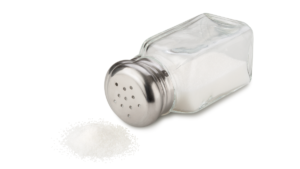Hydration Drinks for Athletes: A Comprehensive Review
As the world tunes into the excitement of the Summer Olympics 2024, the importance of hydration for athletes takes center stage. Proper hydration is critical for peak performance, endurance, and recovery, making the choice of hydration drinks a significant decision for athletes. In this blog post, we will review different kinds of hydration drinks available in the market,

analyze their ingredients, and discuss how they benefit athletes.
The Importance of Hydration in Sports
Hydration is essential for regulating body temperature, maintaining blood volume, and ensuring the proper function of muscles and joints. During intense physical activity, athletes lose fluids through sweat, which can lead to dehydration if not adequately replenished. Dehydration can impair performance, reduce endurance, and increase the risk of heat-related illnesses. This is why choosing the right hydration drink is crucial for athletes, especially during high-stakes events like the Summer Olympics.
Types of Hydration Drinks
Hydration drinks can be broadly categorized into three types: water, electrolyte drinks, and carbohydrate-electrolyte drinks. Each type serves a unique purpose and contains different ingredients tailored to specific hydration needs.
-
Water
Water is the most basic and essential hydration drink. It is crucial for maintaining hydration levels during everyday activities and low-intensity workouts. While water is vital for life, it lacks the additional nutrients required for optimal athletic performance during intense and prolonged exercise.
Benefits:
- Simple and easily accessible
- No added sugars or calories
- Ideal for short, low-intensity activities
Limitations:
- Lacks electrolytes and carbohydrates necessary for endurance sports
- May not sufficiently replace the sodium and other electrolytes lost through sweat

2. Electrolyte Drinks
Electrolyte drinks, also known as sports drinks, are specifically designed to replenish the electrolytes lost through sweat. These drinks contain minerals such as sodium, potassium, calcium, and magnesium, which are vital for maintaining fluid balance, muscle function, and preventing cramps.
Common Ingredients:
- Sodium: Helps maintain fluid balance and prevent hyponatremia (low sodium levels).
- Potassium: Supports muscle function and helps regulate fluid balance.
- Calcium: Essential for muscle contractions and nerve function.
- Magnesium: Aids in muscle function and energy production.
Benefits:
- Replenishes electrolytes lost through sweat
- Helps maintain fluid balance and prevent muscle cramps
- Available in various flavors and formulations
Limitations:
- May contain added sugars and artificial ingredients
- May not provide sufficient carbohydrates for long-duration activities
Popular Brands:
- Gatorade: A well-known sports drink that provides a balanced mix of electrolytes and carbohydrates.
- Powerade: Similar to Gatorade, it offers electrolytes and carbohydrates to support hydration and energy.
- Nuun: Offers electrolyte tablets that dissolve in water, providing a low-calorie, sugar-free option.
-
Carbohydrate-Electrolyte Drinks
Carbohydrate-electrolyte drinks combine the benefits of electrolytes with the energy-providing power of carbohydrates. These drinks are ideal for endurance athletes who need both hydration and a steady supply of energy to sustain prolonged physical activity.
Common Ingredients:
- Carbohydrates (glucose, sucrose, maltodextrin): Provide a quick source of energy and help maintain blood sugar levels.
- Electrolytes (sodium, potassium, magnesium): Essential for fluid balance and muscle function.
- Amino Acids (optional): Some drinks include amino acids to support muscle repair and reduce muscle breakdown.
Benefits:
- Provides both hydration and energy
- Supports endurance and sustained performance
- Can help prevent fatigue and muscle breakdown
Limitations:
- Higher in calories due to carbohydrate content
- May not be suitable for athletes with specific dietary restrictions (e.g., low-carb diets)
Popular Brands:
- GU Hydration Drink Mix: Provides a blend of carbohydrates and electrolytes, with added amino acids for muscle support.
- Skratch Labs Sport Hydration Mix: Offers a natural approach with real fruit flavors and a balance of carbohydrates and electrolytes.
- Tailwind Nutrition Endurance Fuel: Combines carbohydrates and electrolytes in a simple, easy-to-digest formula.
Ingredient Analysis and Benefits of Hydration Drinks
Understanding the ingredients in hydration drinks and their specific benefits can help athletes make informed choices. Here’s a closer look at some key ingredients found in popular hydration drinks and their roles in supporting athletic performance.
Electrolytes
Sodium: Sodium is the primary electrolyte lost in sweat. It helps maintain fluid balance, nerve function, and muscle contractions. Adequate sodium intake prevents hyponatremia, a condition characterized by low sodium levels that can cause symptoms like nausea, headaches, and fatigue.
Potassium: Potassium works in conjunction with sodium to regulate fluid balance and support muscle function. It helps prevent muscle cramps and supports cardiovascular health.
Calcium: Calcium is essential for muscle contractions and nerve function. It also plays a role in bone health, which is particularly important for athletes involved in high-impact sports.
Magnesium: Magnesium is involved in over 300 biochemical reactions in the body, including muscle function, energy production, and protein synthesis. It helps prevent muscle cramps and supports overall muscle health.
Carbohydrates
Glucose and Sucrose: These simple sugars provide a quick source of energy, helping to maintain blood glucose levels during exercise. They are rapidly absorbed and can help sustain performance during prolonged activities.
Maltodextrin: A complex carbohydrate that provides a steady release of energy. It is often used in endurance drinks to provide sustained energy without causing a spike in blood sugar levels.
Amino Acids
BCAAs (Branched-Chain Amino Acids): BCAAs, including leucine, isoleucine, and valine, support muscle protein synthesis and reduce muscle breakdown. They can help improve recovery and reduce muscle soreness after intense exercise.
Glutamine: Glutamine is an amino acid that supports immune function and helps with muscle recovery. It can be particularly beneficial during periods of intense training.
Hydration Strategies for Athletes
Choosing the right hydration drink is just one part of a comprehensive hydration strategy. Here are some tips for athletes to stay properly hydrated:
- Pre-Hydration: Start hydrating well before the exercise session or competition. Aim to drink 16-20 ounces of water or an electrolyte drink 2-3 hours before the activity.
- During Exercise: Drink small amounts of fluid regularly during exercise. For sessions longer than 60 minutes, consider a carbohydrate-electrolyte drink.
- Post-Exercise: Rehydrate after exercise to replace fluids lost through sweat.
- Monitor Hydration Status: Pay attention to signs of dehydration, such as dark urine, dizziness, and dry mouth. Weigh yourself before and after exercise to monitor fluid loss.
As athletes from around the world compete in the Summer Olympics, hydration remains a key factor in their performance and recovery. From basic water to advanced carbohydrate-electrolyte drinks, there are numerous hydration options available to meet the diverse needs of athletes. By understanding the ingredients and benefits of different hydration drinks, athletes can make informed choices to stay hydrated, perform at their best, and achieve their athletic goals.
Whether you’re an elite athlete or a recreational sports enthusiast, the right hydration strategy can make a significant difference in your performance and overall well-being. Stay hydrated, stay healthy, and enjoy the thrill of sports!
If you want more guidance on nutrition for athletic and sports performance, email Team Jalpa to set up a consultation! Whether you’re running marathon or playing a specific sport, we would love to help condition your body with optimal nutrition and help you get the best out of yourself!
Jalpa is a registered dietitian and nutritionist with a Master’s degree in Health & Nutrition from Brooklyn College, CUNY in New York. One of her many expertise also includes Sports Nutrition.
Related Articles:
- Healthy Beverages for a Healthy You!
- The Importance of Sleep for Nutrition and Wellness: 3 Tips to Get Better Sleep.
- Nutrition FAQs




 Watching sodium intake is essential nutrition hack for men’s heart health, as excessive sodium consumption can contribute to high blood pressure and increase the risk of heart disease. Here are some practical tips to help Dad monitor and reduce his sodium intake:
Watching sodium intake is essential nutrition hack for men’s heart health, as excessive sodium consumption can contribute to high blood pressure and increase the risk of heart disease. Here are some practical tips to help Dad monitor and reduce his sodium intake:

 3. Controlling Diabetes through Diet
3. Controlling Diabetes through Diet 3. Weight Management and Exercise
3. Weight Management and Exercise